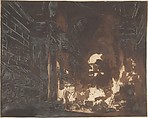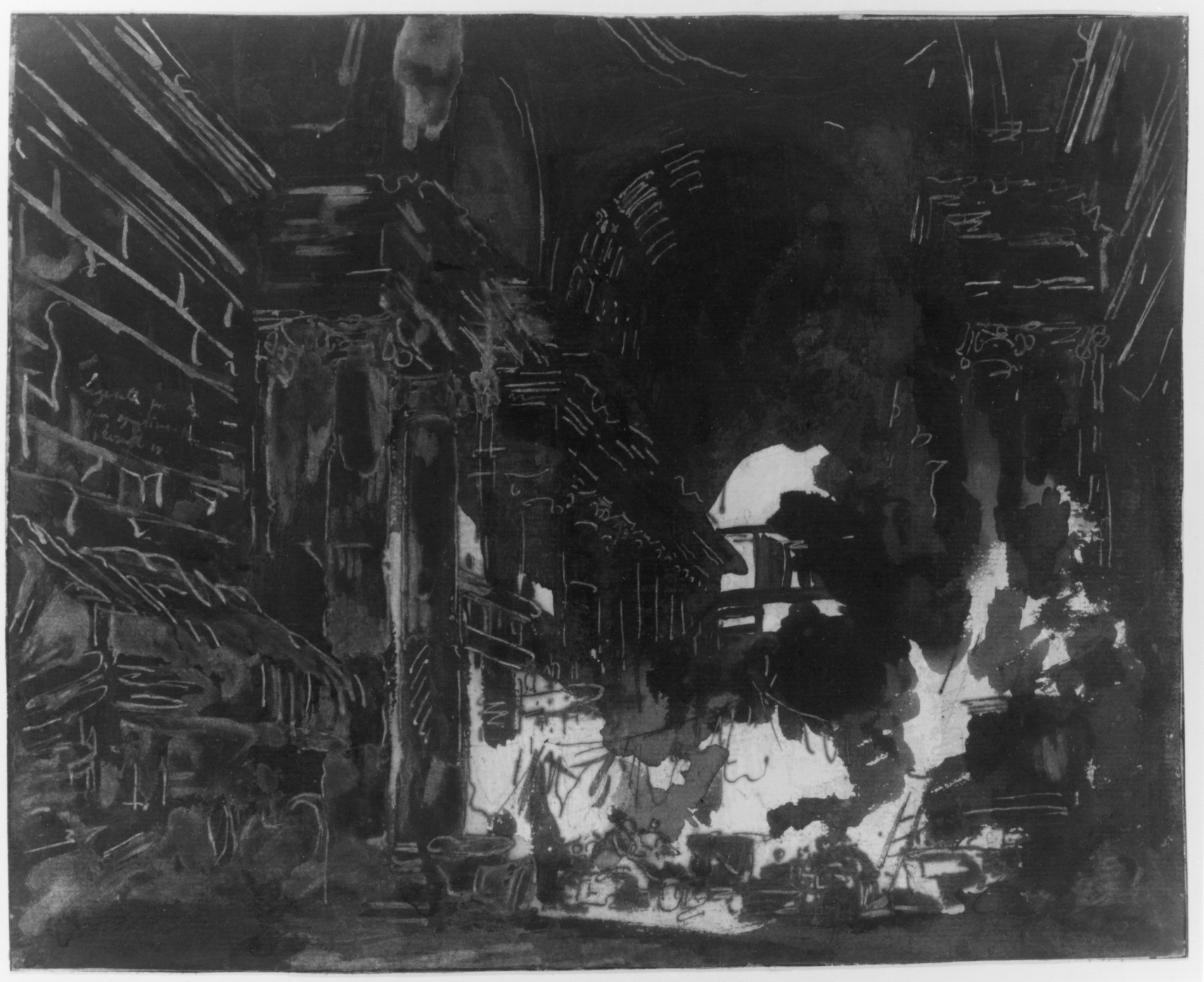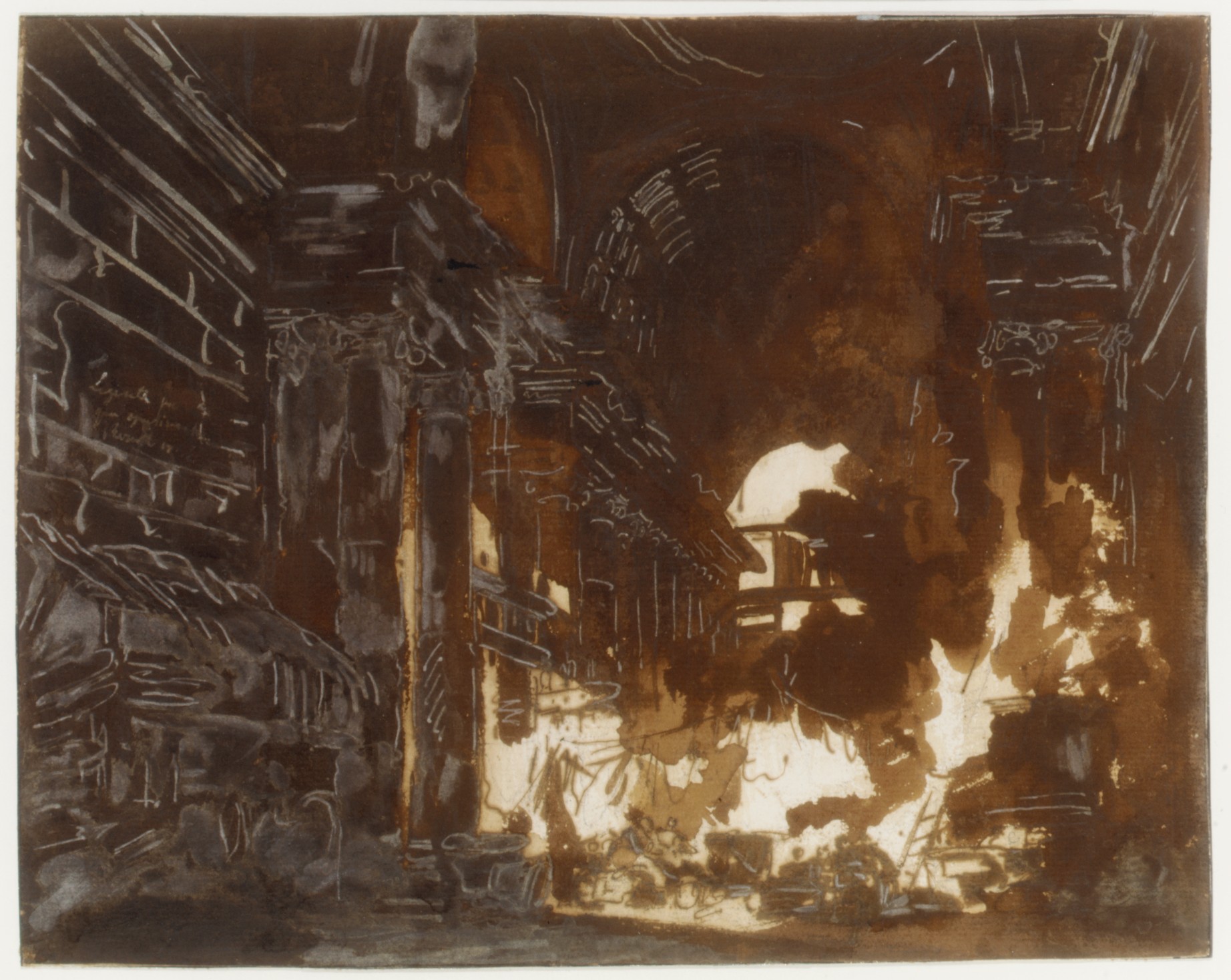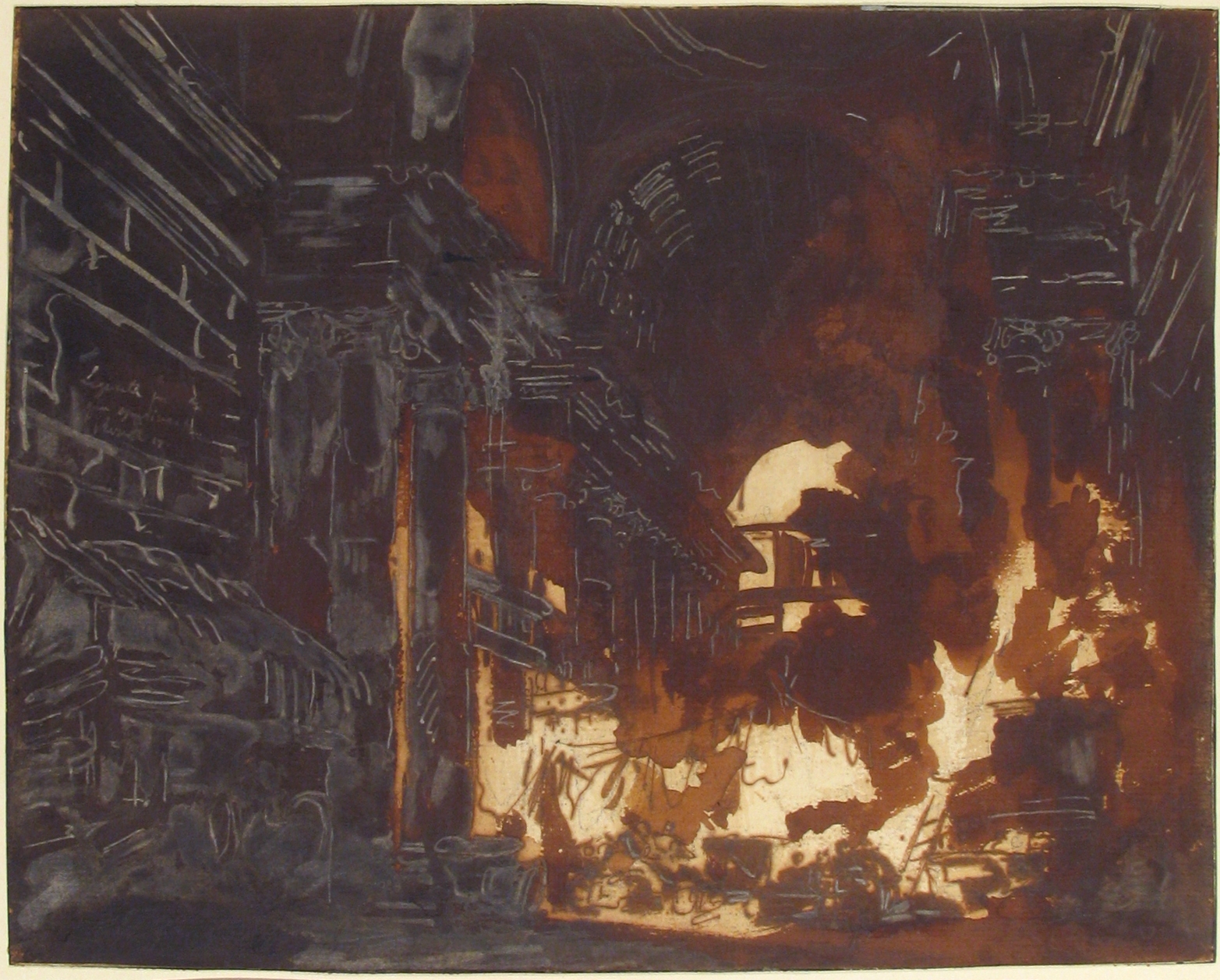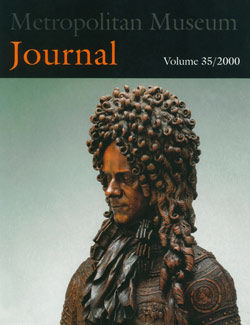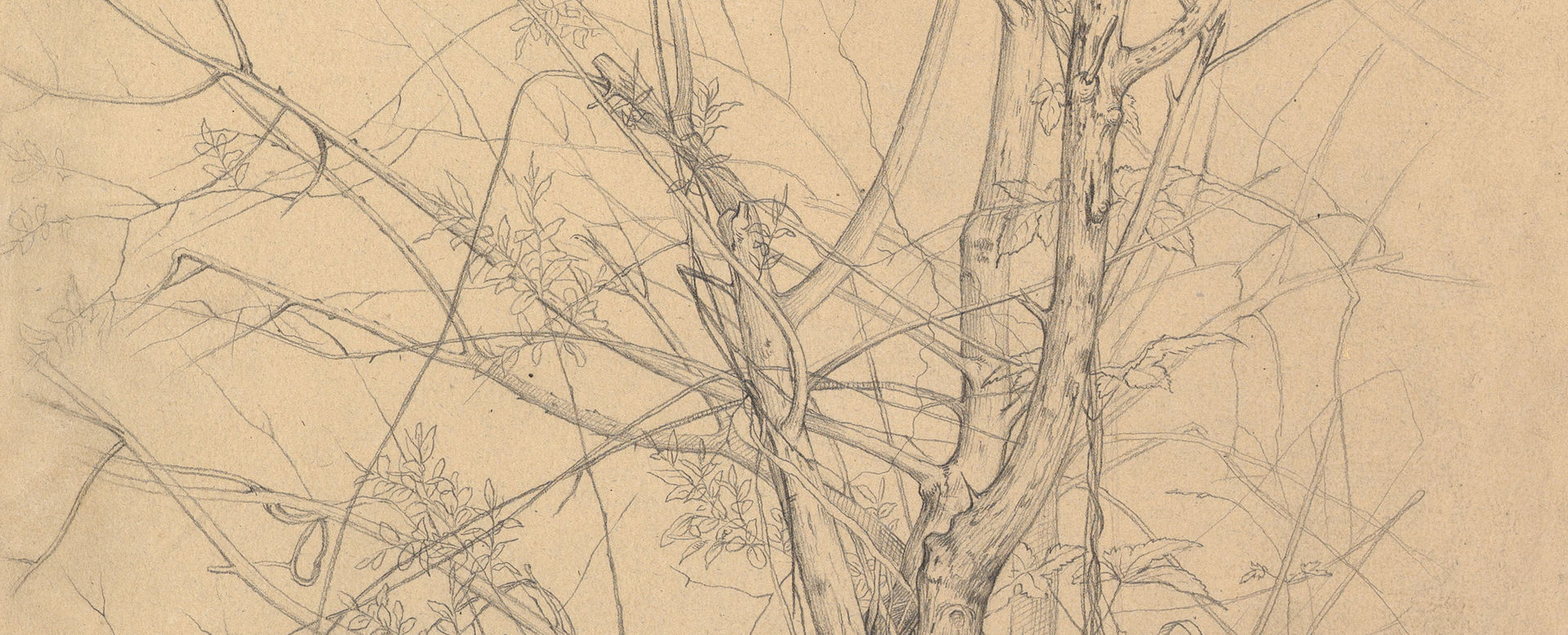Washerwomen in a Ruined Gallery
Hubert Robert French
Not on view
This dramatic, quasi-abstract wash drawing is Hubert Robert's first idea for a composition known through a canvas in the State Hermitage Museum in Saint Petersburg. In the painting one can make out more clearly the industrious group of laundresses who tend a steaming pot on a rustic fire. Just behind them, white fabrics are hung to dry, illuminated by sunlight pouring in through a doorway on the left. The contrast between the ruined ancient arcade, a triumph of an earlier era, and the mundane task for which the space has been appropriated, is a characteristic theme for the artist. His skill at rendering classical architecture is on display, as is his poetic sensibility, inspiring reverie on the passage of time.
The brusque handling of the wash is unusual for Robert, and as a result, the attribution of the sheet was doubted from the time it entered the museum until 2000. Its rehabilitation was supported by the appearance in 1990 of a stylistically similar drawing depicting a Hermit Praying in the Ruins of a Roman Temple, a study for a painting in the J.Paul Getty Museum, Los Angeles. Indeed, the scholar Victor Carlson had proposed in 1987 that the two paintings (in the Getty and the Hermitage) were pendants dating to around 1760.
Between the Met's study and the painting in the Hermitage, Robert presumably made a more finished preparatory study. The appearance of this lost drawing is suggested by a contemporaneous copy in red chalk by Jean-Robert Ango, a draftsman active in Rome at the time, about whom little is known, although he seems to have been friends with Robert and other French pensionnaires in Rome at the time. The Met's sheet is in a very different technique, with dark brown washes laid down very quickly with a broad-tipped brush over a loose graphite underdrawing. One senses that the artist was focused on the powerful contrast of light and shadow, the central organizing principle of the composition. After the saturated, nearly opaque brown washes had dried, Robert must have decided that too much detail had been obscured, and he went back with white gouache and a more fine-tipped brush, delineating architectural features in an unusual light-on-dark technique. Unlike the many highly finished sheets Robert produced for collectors, this quick and emphatic study, full of the artist's shorthand notations, is a rare example of working drawing.
Perrin Stein (June, 2017)
Due to rights restrictions, this image cannot be enlarged, viewed at full screen, or downloaded.
This artwork is meant to be viewed from right to left. Scroll left to view more.
